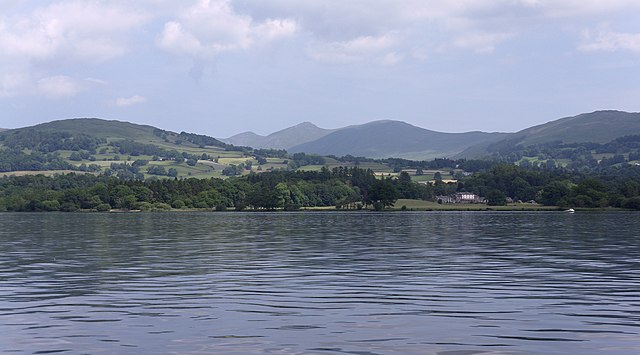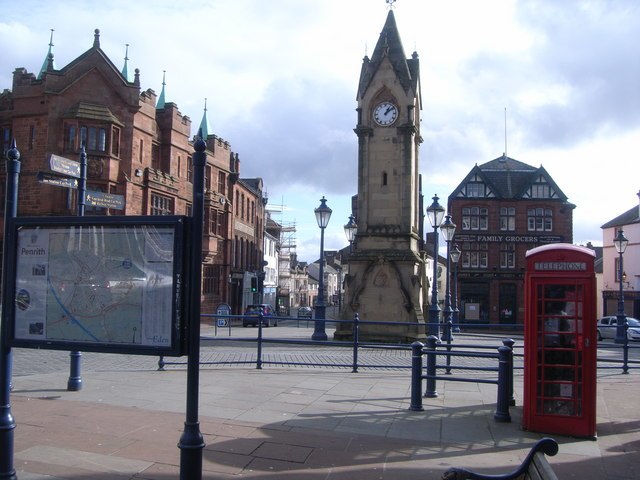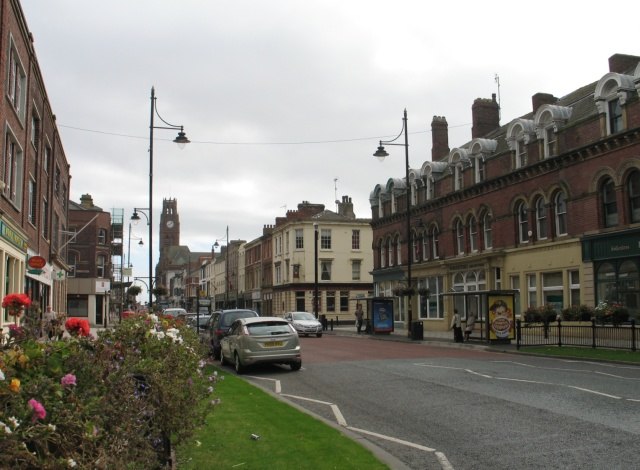Barrow-in-Furness is a port town and civil parish in the Westmorland and Furness district, in the ceremonial county of Cumbria, England. Historically in Lancashire, it was incorporated as a municipal borough in 1867 and merged with Dalton-in-Furness Urban District in 1974 to form the Borough of Barrow-in-Furness. In 2023, the borough merged with Eden and South Lakeland districts to form a new unitary authority: Westmorland and Furness. At the tip of the Furness peninsula, close to the Lake District, it is bordered by Morecambe Bay, the Duddon Estuary and the Irish Sea. In 2021, Barrow's population was 55,489, making it the second largest urban area in Cumbria after Carlisle, and the largest in the Westmorland and Furness unitary authority.
Clockwise from the upper left: Central Barrow with the skyline of Blackpool also visible, Barrow Island, Walney Bridge and Furness College, Furness Abbey, Ramsden Square, Dock Museum and DDH, Barrow Town Hall and St. Mary's Church
Furness Abbey, one of England's most powerful monasteries in the Middle Ages
Barrow Steelworks circa. 1877
Painting of the Barrow Jute Works in 1875
Westmorland and Furness is a unitary authority area in Cumbria, England. The economy is mainly focused on tourism around both the Lake District and Cumbria Coast, shipbuilding and the port in Barrow-in-Furness, and agriculture in the rural parts of the area.
Image: Lake Windermere MMB 56
Image: Market Square, Penrith
Image: Kendal Cumbria 6
Image: Duke Street, Barrow in Furness








